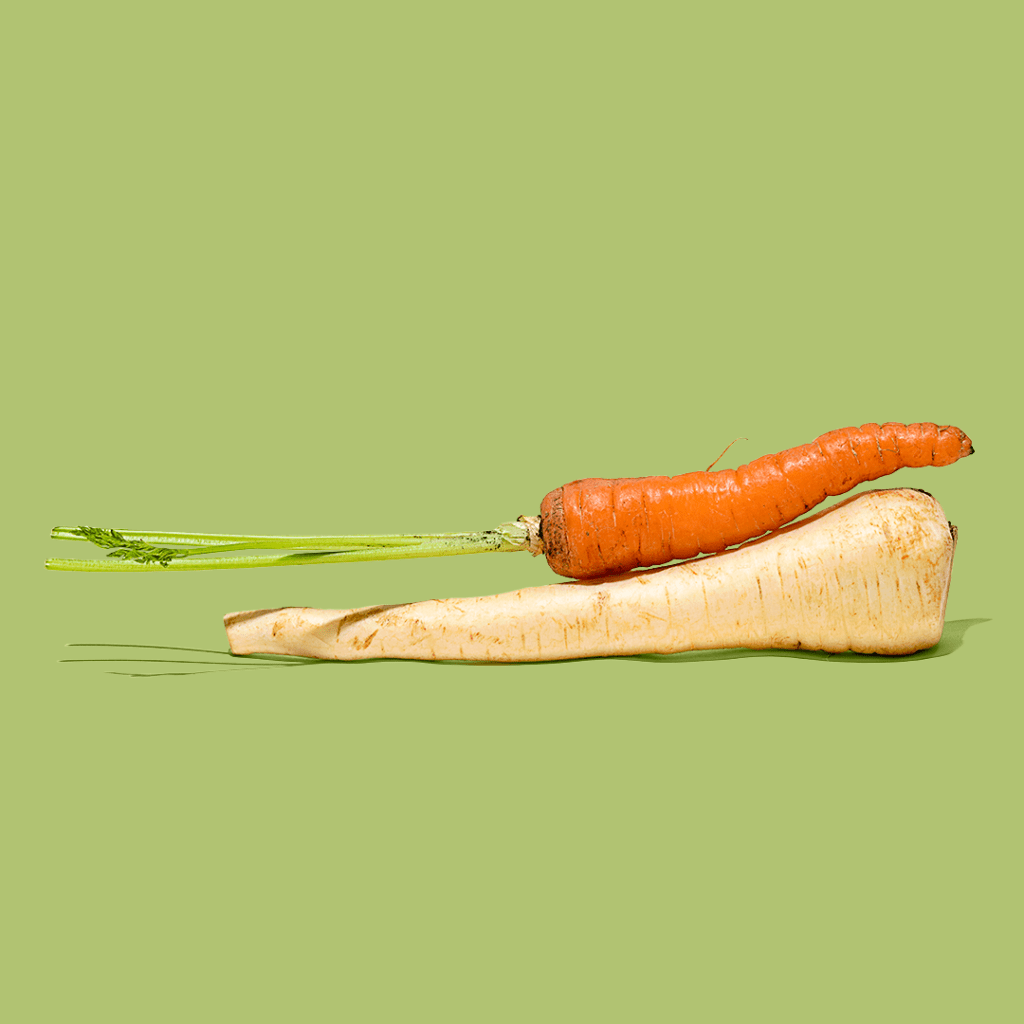
We may be fruit and veggie pros here at Misfits Market, but even we can get stumped on when to use one variety over another. In this series—What’s the Difference?—we’ll break down some key distinctions between the usual suspects, from origin to taste to cooking methods, as well as some of the less common varieties you might find in your box.
Ready to try parsnips or carrots? Get your fresh produce delivered with Misfits Market.
What are carrots?
While most frequently depicted as orange, this slender root veggie spans a color spectrum from deep plum to a warm white. They’re cone-like, with a snappy texture and structure that allows them to hold up wonderfully when shaved into ribbons. Raw carrots bring an earthy sweetness that only deepens when cooked, and the ability to absorb the flavors in whatever sauces or seasonings they’re dressed in.
What are parsnips?
While similar in shape to carrots, parsnips are slightly less slender, and far denser. A parsnip’s flavor is also both sweeter and more complex, with subtle nutty notes and a light aroma similar to that of licorice or fennel. Not to mention, they’re almost always white.
When should I use carrots instead of parsnips?
Opt for carrots if you’re prepping a salad or searching for a fresh garnish—unlike parsnips, they’re just as usable raw as they are cooked. Their herby, earthy notes are muted once cooked, so bear that in mind when deciding whether to steam, roast, or leave ’em as-is.
When should I use parsnips instead of carrots?
Parsnips have a hardier texture that makes them a welcome substitute for mashed potatoes, but they’ll roast up just as easily as carrots with a few more minutes in the oven. The same is what makes them less suitable for raw applications, which don’t do parsnips’ more nuanced flavor notes due justice.
